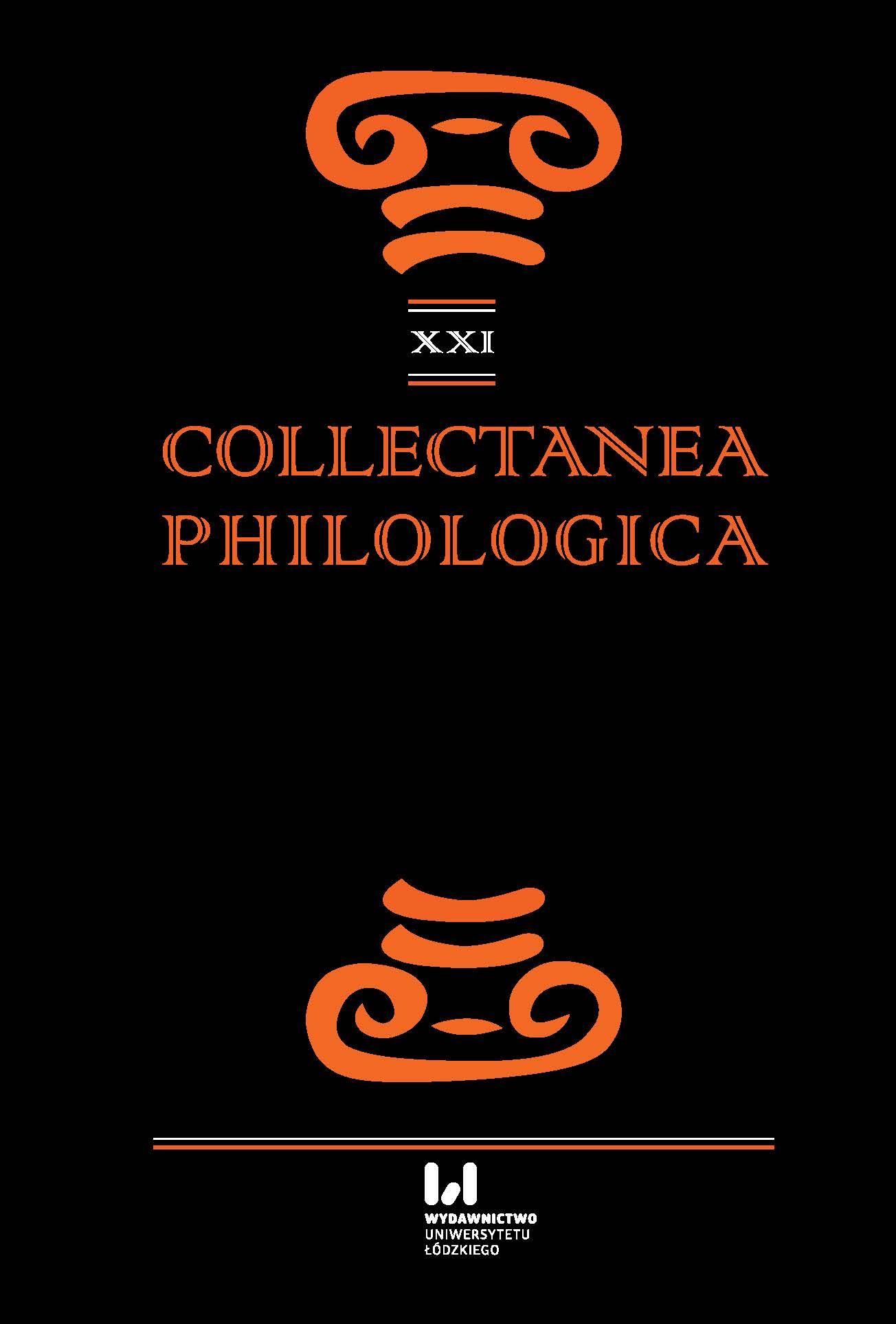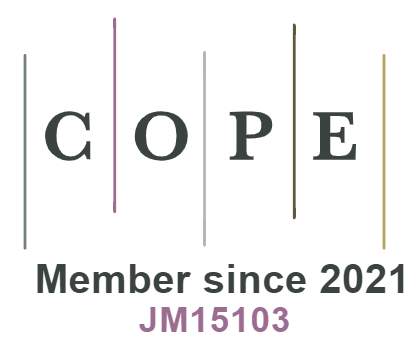Recepcja motywów antycznych we współczesnej sztuce na przykładzie twórczości artystów: Léo Caillarda i Ayali Serfaty
DOI:
https://doi.org/10.18778/1733-0319.21.10Słowa kluczowe:
reception, ancient motives, contemporary art., Léo Caillard, Ayala Serfaty, antique motives, design, designer, modern art., classic art., sculptural art., antique tradition, modern cultureAbstrakt
The objective of this article is to define place and role of antique motives in modern art and design. Due to variety of creativness in XX/XXI century, created in different trends and beyond them, considerations were limited to sculptural art and design, based on creativness of French artist Léo Caillard and Israeli designer Ayala Serfaty. Interpretation of information, which was collected based on study of artists’ works of art, lead to conclusion that, despite different approach to antique tradition, both artists strive to similar targets and their intention is not imitation, but concept based on creation of surprising or even shocking links and juxtapositions. Research of contrasts between tradition and modernity is intended to provoke and encourage viewer to deeper and conscious interpretation of works of art and reflection about position of art in modern culture. It is essential to study esthetic contexts, circumstances of creation of works of art and motivation. The most important feature of this art is to induce strong impressions. Relations between viewer and work of art have crucial meaning. Approximation and logic of thinking, which are characteristic for each research orientations in history of classic and modern art, represents theoretical background of this article. In this context, there are references to Joachim Winckelmann, recognized as creator of methodological basics for researchment on ancient art. There are references to Franz Wickhoff, Aby Warburg and Erwin Panofsky who dealt with iconographical and iconographical-iconological methods.
Bibliografia
Antonelli, P., (1988). “Making Waves”. ID Magazine, January-February, 77.
Google Scholar
Berkovitz, A., (1993). “Hadashot”. Nighties News, October 3, 21–24 .
Google Scholar
Diaz Zurta, B., (2014). “Art Game Fotografias de Léo Caillard”. Fahrenheit – Artecontemporaneo 2, 5–8.
Google Scholar
Eco, U., (1973). Dzieło otwarte, przeł. J. Gałuszka, L. Eustachiewicz, A. Kreisberg, M. Oleksiuk. Warszawa: Wydawnictwo Czytelnik.
Google Scholar
Fiell, Ch., (2005). 1000 Lights, vol. 1. New York: Taschen.
Google Scholar
Gagliano, C., (2012). “Lesstatuess’habillentaussi”. Beaux Arts Magazine, Semptembre, 22.
Google Scholar
Gaucher, S., (2018). “Rhabillées pour l’hiver”. Le Magazine ici Londres, Fevrier, 34.
Google Scholar
Guillaume, F., Ullmann, Ch., (2012). “Comment le numérique révolutionne les musées”. Beaux Arts Magazine, Juin, 56–61.
Google Scholar
Haimovici, M., (2008). “It is the Light”, Tel Aviv Museum of Art catalogue for Soma Light Installation.
Google Scholar
Lang, F., (2002). Klassische Archäologie. Eine Einführung in Methode, Theorie und Praxis. Tübingen–Basel: UTB.
Google Scholar
Mairot, A., (2014). “App. Art”. Palace Costes, July, 30–32.
Google Scholar
McKeohugh, T., (2011). “Ayala Serfaty’s Light Sculptures on Display”, The New York Times, November, 3.
Google Scholar
Millet, M., (2007). “What is Classical Archaeology? Roman Archaeology”, Classical Archaeology, red. S.E. Alcock, R. Osborne. Oxford, 30–50.
Google Scholar
Mrozewicz, L. (2008). „Antyk fundamentem cywilizacji europejskiej. Wykład inaugurujący rok akademicki 2008/2009”, Życie Uniwersyteckie 12 (183), 13–15.
Google Scholar
Ossowski, S., (1966). U podstaw estetyki. Warszawa: Państwowe Wydawnictwo Naukowe.
Google Scholar
Panofsky, E., (1971). Ikonografia i ikonologia, przekł. K. Kamińska, [w:] Studia z historii sztuki. Warszawa: PIW.
Google Scholar
Plato (1959). Gorgias, trans. E.R. Dodds. Oxford: Oxford University Press.
Google Scholar
Platon (1958). Gorgiasz, przeł. W. Witwicki. Warszawa: Państwowe Wydawnictwo Naukowe.
Google Scholar
Schiff, G., (2004). German Essays on Art History: Winckelmann, Burckhardt, Panofsky, and Others. New York: Continuum.
Google Scholar
Sevilla Sadeh, N., (2014). “A Subline Vision: Classical Concepts of Sublimation in Classical and Hellenistic Sculptural Goddess Images and their Manifestation in Artworks by Two Contemporary Israeli Artists, Lea Avital and Ayala Serfaty”, Consciousness, Literature and the Arts, 15 (1) April, 14.
Google Scholar
Tatarkiewicz, Wł., (1985). Historia estetyki. T. 1. Warszawa: Arkady.
Google Scholar
Tatarkiewicz, Wł., (2005). Dzieje sześciu pojęć. Warszawa: Państwowe Wydawnictwo Naukowe.
Google Scholar
Winckelmann, J., (1974). Myśli o naśladowaniu greckich rzeźb i malowideł, [w:] E. Grabska, Teoretycy, artyści i krytycy o sztuce 1700–1870. Warszawa: Państwowe Wydawnictwo Naukowe.
Google Scholar
Winckelmann, J., (2016). Geschichte der Kunst des Altertums. München: Vero Verlag.
Google Scholar
Yaffe, T., (2012). „A Light Touch”. Cultured Magazine, Winter, 118.
Google Scholar
Zandberg, E., (1955). “H’ir”. A Woman’s World, December, 7–8.
Google Scholar
Pobrania
Opublikowane
Jak cytować
Numer
Dział
Licencja

Utwór dostępny jest na licencji Creative Commons Uznanie autorstwa – Użycie niekomercyjne – Bez utworów zależnych 4.0 Międzynarodowe.












